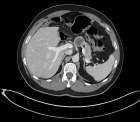Abstract
Observational Study
Poor Diet Leading to the Increasing Risk of Atherosclerosis in the World
Bijaya Bhusal*
Published: 03 September, 2024 | Volume 9 - Issue 3 | Pages: 142-147
Atherosclerosis Ischemic Cardiovascular Disease (ASICD), one of the leading causes of global deaths, is mainly caused due to the development of plaque on the inner walls of arteries of the human heart. Ischemia refers to the lack of enough oxygen (O2), nutrient delivery, and improper waste removal in the cardiac cells. About 90% of cardiovascular diseases in the present world are due to the formation of lipid/cholesterol-based plaques that can form under the lining of the smooth epithelial blood cells. In the US, a study published in the Journal of the American College of Cardiology estimated that poor diet is responsible for about 45% of Cardiovascular Disease. Atherosclerosis doesn’t cause much effect until and unless the plaque becomes unstable due to the accumulation of thrombus that shows Acute Coronary Syndrome. Acute Coronary Syndrome is the result of blockage of blood vessels leading to Myocardial Infarction (Unstable Angina Pectoris). Cardiac Cells require a sufficient amount of Oxygen to function properly. Thus, the demand and supply of oxygen to the cardiac cells should be properly balanced. Atherosclerosis Ischemic Cardiovascular syndrome can worsen if the person is more involved in exercise or emotional stress because at that time their body requires higher oxygen but blood flow gets disrupted due to the formation of plague. Later in the paper, we will discuss the New York Heart Association classification, followed by the top 3 poor diets that are considered to be increasing the cases of cardiovascular disease around the world.
Read Full Article HTML DOI: 10.29328/journal.jccm.1001195 Cite this Article Read Full Article PDF
Keywords:
Atherosclerosis; Poor diet; Arterial plaque; Malnutrition; Angina pectoris
References
- Anand SS, Hawkes C, de Souza RJ, Mente A, Dehghan M, Nugent R. et al. Food Consumption and its impact on Cardiovascular Disease: Importance of Solutions focused on the globalized food system. J Am Coll Cardiol. 2015;66(14):1590-1614. Available from: https://www.ncbi.nlm.nih.gov/pmc/articles/PMC4597475/#:~:text=Poor%20quality%20diets%20are%20
- Patient Education. written by Oklahoma children hospital. Available from: https://childrenslibrary.ouhealth.com/Library/HealthSheets/3,S,89795#:~:text=Antiplatelets%20
- Henry PD. Calcium channel blockers and atherosclerosis. J Cardiovasc Pharmacol. 1990;16:S12-5. Available from: https://pubmed.ncbi.nlm.nih.gov/1706008/#:~:text=Studies%20on%20the%20antiather
- https://www.betterhealth.vic.gov.au/health/conditionsandtreatments/heart-disease-and-f
- Cardiovascular Disability: Updating the Social Security Listings. Available from: https://www.ncbi.nlm.nih.gov/books/NBK209964/#:~:text=Ischemic%20heart%20
- Samir Yadav (Manmohan Cardiothoracic Vascular and Transplant Center), through informal interview. Dr. Ahmed Hasan; Cardiovascular science at the National Heart, lungs and Blood Institute.
- https://world-heart-federation.org/wp-content/uploads/World-Heart-Report-2023 .pdf review
- Cardiovascular diseases. Published in WHO. Available from: https://www.who.int/health-topics/cardiovascular-diseases#tab=tab_1
- https://www.pcronline.com/News/Whats-new-on-PCRonline/2023/World-Heart-Day-202
- Mensah GA, Fuster V, Murray CJL, Roth GA. Global Burden of Cardiovascular Diseases and Risks, 1990-2022. JACC. 2023;82(25) 2350–2473. Available from: https://www.jacc.org/doi/10.1016/j.jacc.2023.11.007
- Björkegren JLM, Lusis AJ. Atherosclerosis: Recent developments. Atherosclerosis. 2022;185(10):1630-1645. Available from: https://doi.org/10.1016/j.cell.2022.04.004
- Jebari-Benslaiman S, Galicia-García U, Larrea-Sebal A, Rekondo Olaetxea J, Alloza I, Vandenbroeck K, et al. Pathophysiology of atherosclerosis. Int J Mol Sci. 2022;23(6):3346. Available from: https://doi.org/10.3390/ijms23063346
- Goo YH, Ayyappan JP, Cheeran FD, Bangru S, Saha PK, Baar P, et al. Lipid droplet-associated hydrolase mobilizes stores of liver X receptor sterol ligands and protects against atherosclerosis. Nat Commun. 2024;15:6540. Available from: https://www.nature.com/articles/s41467-024-50949-y
- WHO. 2024. Available from: https://www.who.int/news-room/fact-sheets/detail/malnutrition#:~:text=Globally%20in%202022%2C%20149%20million,age%20are%20linked%20to%20undernutrition
- The Nutrition Source. Potassium. Available from: https://nutritionsource.hsph.harvard.edu/potassium/
Figures:
Similar Articles
-
Indications and Results of Coronarography in Senegalese Diabetic Patients: About 45 CasesNdao SCT*,Gaye ND,Dioum M,Ngaide AA,Mingou JS,Ndiaye MB, Diao M,Ba SA. Indications and Results of Coronarography in Senegalese Diabetic Patients: About 45 Cases. . 2017 doi: 10.29328/journal.jccm.1001007; 2: 013-019
-
Spontaneous rupture of a giant Coronary Artery Aneurysm after acute Myocardial InfarctionOğuzhan Çelik,Mucahit Yetim,Tolga Doğan,Lütfü Bekar,Macit Kalçık*,Yusuf Karavelioğlu. Spontaneous rupture of a giant Coronary Artery Aneurysm after acute Myocardial Infarction. . 2017 doi: 10.29328/journal.jccm.1001009; 2: 026-028
-
Investigation of Retinal Microvascular Findings in patients with Coronary Artery DiseaseTolga Doğan*,Osman Akın Serdar,Naile Bolca Topal,Özgür Yalçınbayır. Investigation of Retinal Microvascular Findings in patients with Coronary Artery Disease. . 2017 doi: 10.29328/journal.jccm.1001012; 2: 042-049
-
Lipid-induced cardiovascular diseasesSumeet Manandhar,Sujin Ju,Dong-Hyun Choi,Heesang Song*. Lipid-induced cardiovascular diseases. . 2017 doi: 10.29328/journal.jccm.1001018; 2: 085-094
-
Glycosaminoglycans as Novel Targets for in vivo Contrast-Enhanced Magnetic Resonance Imaging of AtherosclerosisYavuz O Uca*,Matthias Taupitz. Glycosaminoglycans as Novel Targets for in vivo Contrast-Enhanced Magnetic Resonance Imaging of Atherosclerosis. . 2020 doi: 10.29328/journal.jccm.1001091; 5: 080-088
-
Correlation between chronic inflammation of rheumatoid arthritis and coronary lesions: “About a monocentric series of 202 cases”Nassime Zaoui*,Amina Boukabous,Nabil Irid,Nadhir Bachir,Ali Terki. Correlation between chronic inflammation of rheumatoid arthritis and coronary lesions: “About a monocentric series of 202 cases”. . 2022 doi: 10.29328/journal.jccm.1001144; 7: 109-114
-
Poor Diet Leading to the Increasing Risk of Atherosclerosis in the WorldBijaya Bhusal*. Poor Diet Leading to the Increasing Risk of Atherosclerosis in the World. . 2024 doi: 10.29328/journal.jccm.1001195; 9: 142-147
Recently Viewed
-
Removal of Chromium from Aqueous Solution by Thermally Treated Mgal Layered Double HydroxideDashkhuu Khasbaatar*,Enkhtur Otgonjargal,Byambasuren Nyamsuren,Enkhtuul Surenjav,Gunchin Burmaa,Jadambaa Temuujin. Removal of Chromium from Aqueous Solution by Thermally Treated Mgal Layered Double Hydroxide. Ann Civil Environ Eng. 2017: doi: 10.29328/journal.acee.1001001; 1: 001-008
-
Evaluating the Pros and Cons of Evening and Weekend Outpatient Medical Imaging: Implications for Patients and Radiology ProfessionalsLucas Cohen and Ethan Cohen*. Evaluating the Pros and Cons of Evening and Weekend Outpatient Medical Imaging: Implications for Patients and Radiology Professionals. J Radiol Oncol. 2024: doi: 10.29328/journal.jro.1001069; 8: 078-084
-
Radiomics by Quantitative Diffusion-weighted MRI for Predicting Response in Patients with Extremity Soft-tissue Undifferentiated Pleomorphic SarcomaRF Valenzuela*, E Duran-Sierra, M Canjirathinkal, B Amini, KE Torres, RS Benjamin, J Ma, WL Wang, KP Hwang, RJ Stafford, C Wu, AM Zarzour, AJ Bishop, S Lo, JE Madewell, R Kumar, WA Murphy Jr, CM Costelloe. Radiomics by Quantitative Diffusion-weighted MRI for Predicting Response in Patients with Extremity Soft-tissue Undifferentiated Pleomorphic Sarcoma. J Radiol Oncol. 2024: doi: 10.29328/journal.jro.1001066; 8: 064-071
-
Our experience with single patch repair of complete atrioventricular septal defectsCan Vuran*,Uygar Yoruker,Oguz Omay,Bulent Saritas,Canan Ayabakan,Ozlem Sarisoy,Riza Turkoz. Our experience with single patch repair of complete atrioventricular septal defects. J Cardiol Cardiovasc Med. 2020: doi: 10.29328/journal.jccm.1001095; 5: 105-108
-
Management and use of Ash in Britain from the Prehistoric to the Present: Some implications for its PreservationJim Pratt*. Management and use of Ash in Britain from the Prehistoric to the Present: Some implications for its Preservation. Ann Civil Environ Eng. 2024: doi: 10.29328/journal.acee.1001059; 8: 001-011
Most Viewed
-
Evaluation of Biostimulants Based on Recovered Protein Hydrolysates from Animal By-products as Plant Growth EnhancersH Pérez-Aguilar*, M Lacruz-Asaro, F Arán-Ais. Evaluation of Biostimulants Based on Recovered Protein Hydrolysates from Animal By-products as Plant Growth Enhancers. J Plant Sci Phytopathol. 2023 doi: 10.29328/journal.jpsp.1001104; 7: 042-047
-
Feasibility study of magnetic sensing for detecting single-neuron action potentialsDenis Tonini,Kai Wu,Renata Saha,Jian-Ping Wang*. Feasibility study of magnetic sensing for detecting single-neuron action potentials. Ann Biomed Sci Eng. 2022 doi: 10.29328/journal.abse.1001018; 6: 019-029
-
Sinonasal Myxoma Extending into the Orbit in a 4-Year Old: A Case PresentationJulian A Purrinos*, Ramzi Younis. Sinonasal Myxoma Extending into the Orbit in a 4-Year Old: A Case Presentation. Arch Case Rep. 2024 doi: 10.29328/journal.acr.1001099; 8: 075-077
-
Pediatric Dysgerminoma: Unveiling a Rare Ovarian TumorFaten Limaiem*, Khalil Saffar, Ahmed Halouani. Pediatric Dysgerminoma: Unveiling a Rare Ovarian Tumor. Arch Case Rep. 2024 doi: 10.29328/journal.acr.1001087; 8: 010-013
-
Physical activity can change the physiological and psychological circumstances during COVID-19 pandemic: A narrative reviewKhashayar Maroufi*. Physical activity can change the physiological and psychological circumstances during COVID-19 pandemic: A narrative review. J Sports Med Ther. 2021 doi: 10.29328/journal.jsmt.1001051; 6: 001-007

HSPI: We're glad you're here. Please click "create a new Query" if you are a new visitor to our website and need further information from us.
If you are already a member of our network and need to keep track of any developments regarding a question you have already submitted, click "take me to my Query."























































































































































